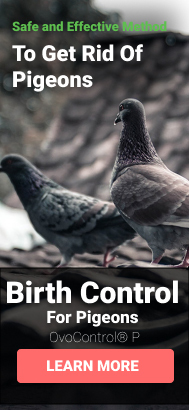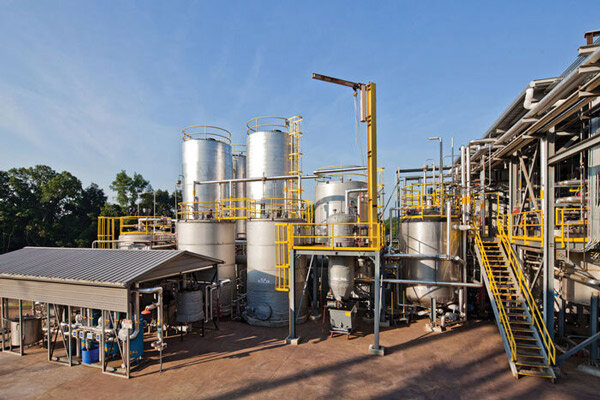Read our summary flier and case studies.
Here's a small sampling of the pigeon control problems we've solved over the years.
Palo Verde Nuclear generating station, Arizona
Since 1988, pigeons have represented a perennial pest problem at the expansive site. In addition to slip hazards, bird droppings contaminate sensitive equipment and result in more frequent and costly maintenance cycles. The facility had experimented with different abatement techniques although none with any lasting effect. Learn how we safely and effectively solved the power site’s pigeon control problem by reading Case Study No. 12.
Chemical plant, South Carolina
Within six months there were just five pigeons remaining at the site. OvoControl (reducing reproduction) in combination with aggressive trapping (increasing mortality) were successful in rapidly reducing the bird burden. Read how in our Case Study 11.
PIMA Community College, arizona
Pima College is a community college located in Tucson, AZ. With nearly 10,000 students, the main campus has a challenging mix of open areas and structures. Read our Case Study 14 to learn how we reduced the pigeon flock from 200 pigeons to about 5 birds.
Memorial-Hermann Medical Center, texas
The hospital campus encompasses more than four city blocks with structures ranging from one to five stories. As in many parts of Houston, there was a high concentration of pigeons with an estimated population approaching 2,000 birds. Loafing and nesting areas were extensive and pigeon debris represented an infectious risk. Learn more about how we solved their pigeon control problem by reading our Case Study 9 brief and read our letter of reference from the staff.
Don Laughlin’s Riverside Resort Hotel and Casino, nevada
For years, pigeons were attracted by the food, quality nesting sites and shade from the intense summer heat. While not a large population of birds, loafing and nesting areas were extensive and pigeon debris represented a perennial maintenance issue, especially in the RV Park. We outline our solution in Case Study No. 16 and you may read the casino and hotel management’s letter of reference.
Loring Way Condominiums in Minnesota
In the twelve months since the program was implemented, bird numbers have been reduced by approximately half, from 80 to 40 pigeons through attrition. The OvoControl program will continue to reduce the number of pigeons in the resident flock at the rate of 50%, annually. Learn more about the problem and solution by reading our No. 6 Case Study.
Downtown Walla Walla, washington
Within two seasons, the pigeon population was down to a fraction of the starting point. According to Russ Craber, Sun Pest’s CEO, “it was as if someone flipped a switch and turned the birds off. Using the product enables me to stay ahead of the pigeons, enabling the success of the program overall.” Learn more by reading Case Study No. 3 and then review the technician’s report.
STrip Mall, San diego California
Attracted by readily available food and perching areas at the dome-like skating rink rooftop, pigeons and what they leave behind represented a perennial maintenance issue at the strip mall, especially in the immediate area of the roller skating rink. The flock was estimated at 200 birds. We safely and effectively reduced the number of birds to 20 within a few months. Learn how we solved mall managements’ perennial problem by reading Case Study No. 13.
Barcelona, Spain
The Barcelona City Council made a strategic decision in 2016 to change the management strategy by incorporating a fertility control method using Nicarbazin. Over the three years, the implemented strategy successfully reduced the number of pigeons in the treated colonies by 55.26% at the end of the evaluation. The positive results of the Barcelona experience with Ovocontrol demonstrate its potential as an effective solution for pigeon control and inspire further exploration of non-lethal methods in wildlife management. You can learn more about this by watching the webinar.
Would you like to learn more about OvoControl and whether or not it is the right solution for pigeon control at your facility? Then contact us today to learn how we can help you solve your pigeon control problem.












